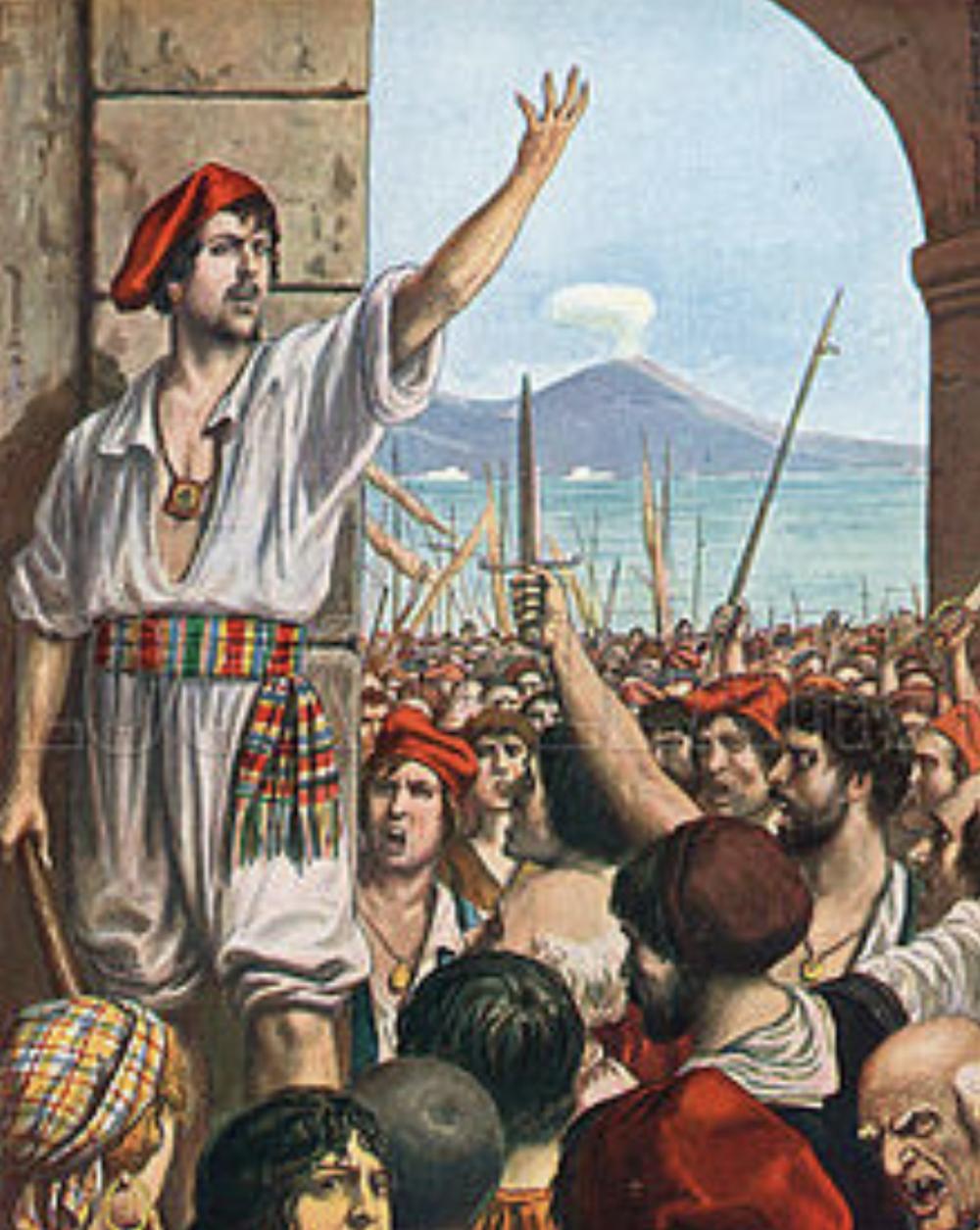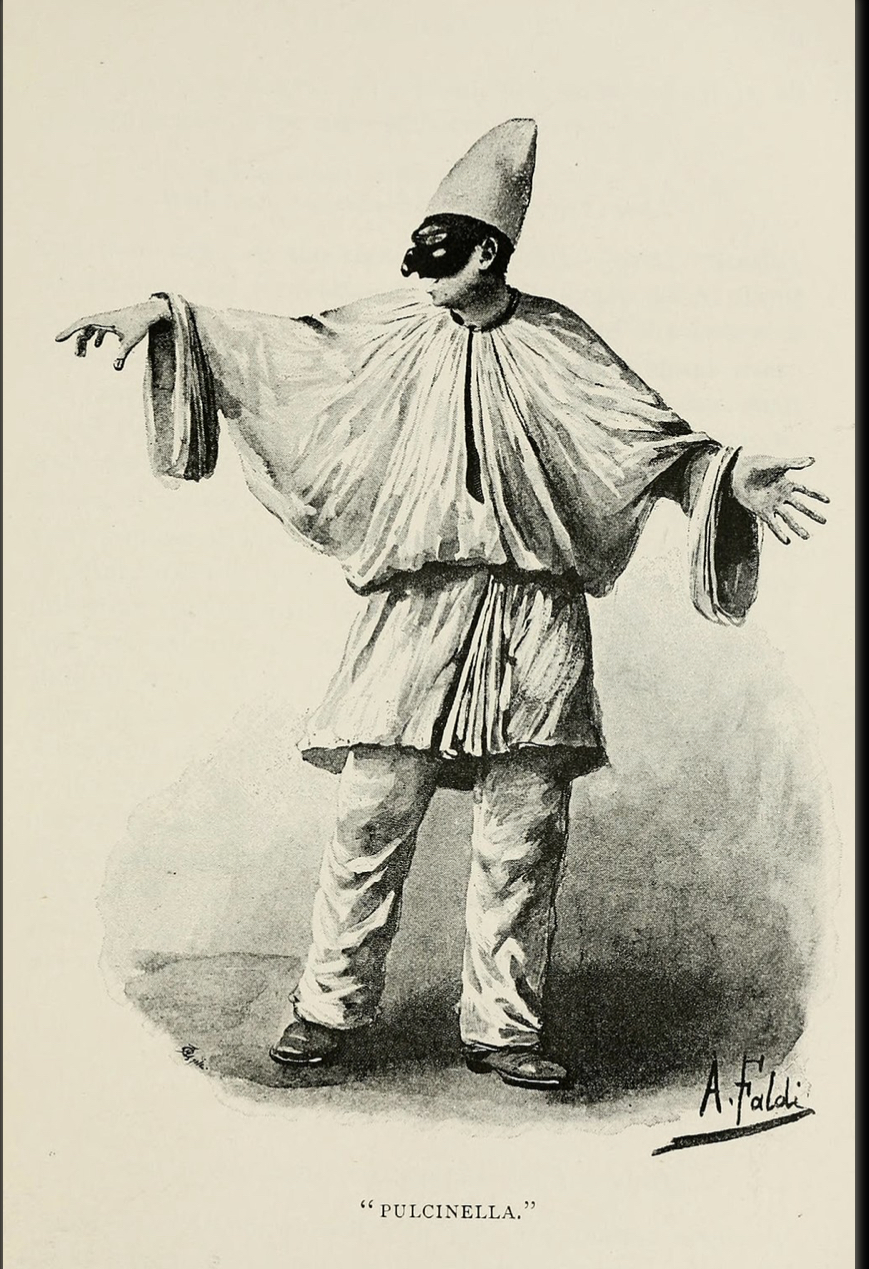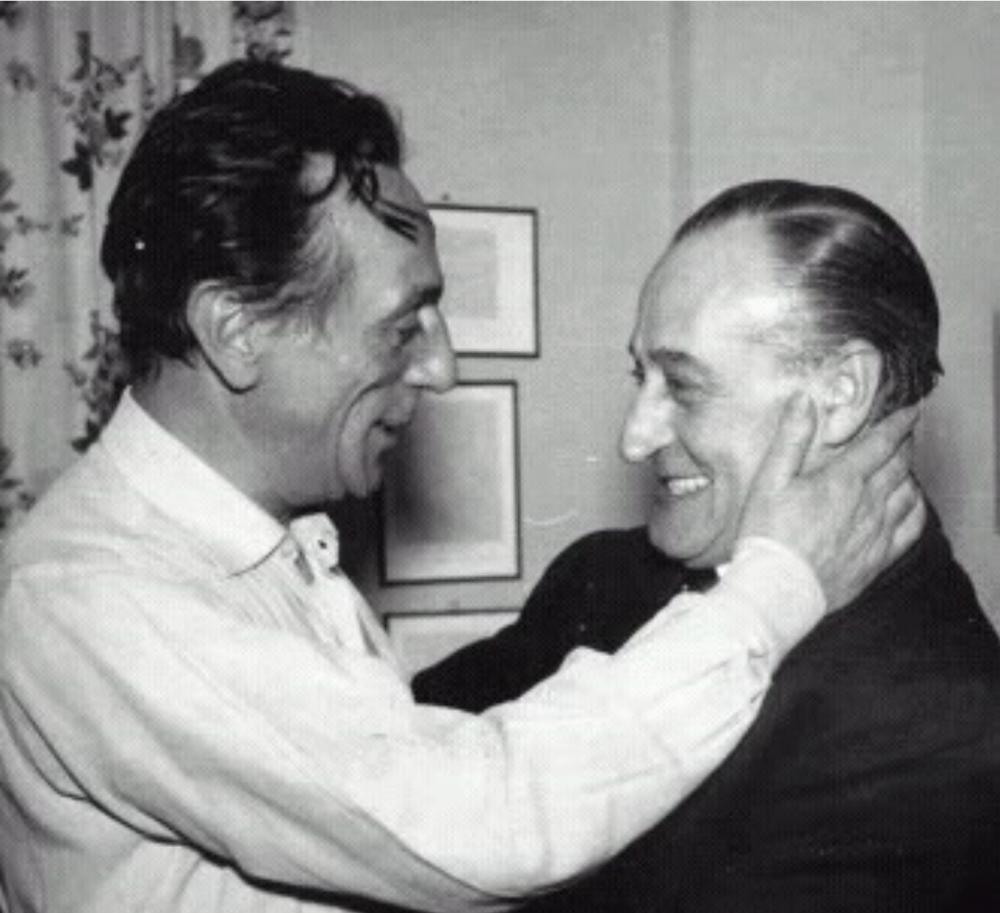Con la cattedra di Commercio e Meccanica (commercio anticamente significava economia) istituita nel 1754 da Antonio Genovesi, Napoli è stata la prima città al mondo a dotarsi di un corso di laurea in economia. Il 3 ottobre 1839 con la cerimonia di inaugurazione della linea Napoli-Portici nasceva la prima ferrovia d′Italia. Nei primi anni del Regno d′Italia, subito dopo l′Unità, la lira veniva stampata dal Banco di Napoli. Napoli è sempre stata una delle capitali più importanti d′Europa, a lungo la capitale dello stato italiano più esteso e fino a tutto il seicento la città col maggior numero d′abitanti di tutta l′Europa. La maschera locale è il famosissimo Pulcinella, che impersona il genio, l′estro, la furbizia e l′ingegnosità dei napoletani. Probabilmente tale maschera è di origine classica (da Maccus, il protagonista burlone e grottesco delle Fabulae Atellanae, uno spettacolo molto in voga nella civiltà romana del IV secolo AC) ed il nome sarebbe legato a Puccio d′Aniello, un contadino di Acerra che nel seicento, tramite rappresentazioni teatrali, portò in auge l′antica maschera. Napoli è città di poeti. Qui sono sepolti i grandi poeti Virgilio e Giacomo Leopardi. C′è un′importantissima scuola di poesia in vernacolo ed in italiano. Napoli è città di magia e superstizione. Per i suoi vicoli si dice che si aggirino ′o munaciello (spiritello dispettoso) e ′a bella ′mbriana (spirito benigno). Famosissima è l′antica Smorfia Napoletana colla quale è possibile ricavare dei numeri da giocare al lotto attraverso l′interpretazione dei sogni. A Napoli visse nel settecento Raimondo di Sangro, Principe di San Severo, alchimista e stregone, che si narrava sequestrasse ignari popolani per sottoporli ai suoi truci esperimenti. Il principe era in realtà un illuminato scienziato massone e rosacrociano e a tutt′oggi non si sa come abbia fatto a creare le sue Macchine anatomiche visibili presso la Cappella San Severo, nel centro di Napoli. Si tratta di corpi di esseri umani mummificati e pietrificati con ritrovati scientifici che, all′epoca del principe, non si riteneva potessero già conoscersi. San Gennaro, patrono di Napoli, è il protagonista di una singolare manifestazione di santità e religiosità. Periodicamente, ad Aprile, il suo sangue, raccolto in un ampolla subito dopo il suo martirio nel III secolo, si scioglie, nell′ambito di un rito solenne presso il Duomo di Napoli. Gennaro, all′epoca del martirio era vescovo di Benevento, non di Napoli. Napoli è la città di Masaniello (vero nome: Tommaso Aniello d′Amalfi), simbolo di ribellione contro l′arroganza dei potenti, era un popolano che si mise al capo di una rivolta della gente semplice della città contro dazi e gabelle ed il malgoverno dei nobili che affamavano i più umili. Dopo un primo momento di vittoria, Masaniello impazzì (forse a causa di un avvelenamento da parte degli spagnoli), perse il controllo delle masse e venne ucciso proprio dai popolani, consentendo al governo di restaurare l′ordine. Napoli è la patria di Luca Giordano, fra i pittori europei più importanti del seicento, dal gusto barocco e realista, ha lasciato numerose testimonianze in città della sua arte ed ebbe l′onore di lavorare per Carlo II in Spagna affrescando l′Escorial, il Cason del Buen Retiro e la sagrestia della cattedrale di Toledo. Napoli è città di musica. Nel settecento la scuola napoletana portò in tutta Europa in auge l′opera buffa con Scarlatti, Pergolesi, Jommelli, Cimarosa. Il Teatro San Carlo, fra i più importanti in Italia, fu diretto da Gioacchino Rossini. Famosissima in tutto il mondo è la canzone napoletana, che nata sulla fine dell′ottocento sullo schema della canzone da salotto, ha reso immortali i temi de ′O surdato nnammurato, ′O sole mio, e rappresenta l′immagine della canzone popolare italiana nel mondo. Qui nacque Enrico Caruso, probabilmente il più celebre tenore del novecento. Napoli ha una grande tradizione di teatro con Scarpetta, De Filippo, Viviani... e naturalmente il principe della risata Antonio De Curtis, in arte Totò. Nato nel rione Sanità nel 1898, Totò arriva alla ribaltà nazionale con spettacoli di varietà e di avanspettacolo e oltre ad aver realizzato innumerevoli film (quasi cento!), ha scritto anche diverse canzoni (tra cui la famosa Malafemmena) e poesie (da ricordare la ′A Livella). Napoli è capitale di gastronomia: la pizza qui nacque in onore della Regina Margherita di Savoia utilizzando i colori bianco, rosso e verde che ricordavano il tricolore. Anche la mozzarella è una pietanza napoletana.
With the chair of Commerce and Mechanics (trade in ancient times meant economy) established in 1754 by Antonio Genovesi, Naples was the first city in the world to have a degree course in economics. On 3 October 1839, with the inauguration ceremony of the Naples-Portici line, the first railway in Italy was born. In the early years of the Kingdom of Italy, immediately after the unification, the lira was printed by the Banco di Napoli. Naples has always been one of the most important capitals of Europe, for a long time the capital of the largest Italian state and until the end of the seventeenth century the city with the largest number of inhabitants in all of Europe. The local mask is the very famous Pulcinella, who personifies the genius, inspiration, cunning and ingenuity of the Neapolitans. Probably this mask is of classical origin (from Maccus, the joker and grotesque protagonist of the Fabulae Atellanae, a very popular show in the Roman civilization of the 4th century BC) and the name would be linked to Puccio d′Aniello, a peasant from Acerra who in the seicento, through theatrical representations, brought the ancient mask into vogue. Naples is the city of poets. The great poets Virgilio and Giacomo Leopardi are buried here. There is a very important school of poetry in the vernacular and in Italian. Naples is a city of magic and superstition. Its alleys are said to wander munaciello (mischievous sprite) and bella ′mbriana (benign spirit). Very famous is the ancient Neapolitan Smorfia with which it is possible to obtain numbers to play the lottery through the interpretation of dreams. In Naples lived in the eighteenth century Raimondo di Sangro, Prince of San Severo, alchemist and sorcerer, who was said to kidnap unsuspecting commoners to subject them to his grim experiments. The prince was actually an enlightened Freemason and Rosicrucian scientist and to this day it is not known how he created his anatomical machines visible at the San Severo Chapel, in the center of Naples. These are the bodies of human beings mummified and petrified with scientific findings that, at the time of the prince, it was not believed they could already know each other. San Gennaro, patron saint of Naples, is the protagonist of a singular manifestation of holiness and religiosity. Periodically, in April, his blood, collected in an ampoule immediately after his martyrdom in the third century, dissolves, as part of a solemn rite at the Cathedral of Naples. Gennaro, at the time of the martyrdom was bishop of Benevento, not of Naples. Naples is the city of Masaniello (real name: Tommaso Aniello d′Amalfi), a symbol of rebellion against the arrogance of the powerful, he was a commoner who put himself at the head of a revolt of the simple people of the city against duties and taxes and bad governance of the nobles who starved the humblest. After a first moment of victory, Masaniello went mad (perhaps due to poisoning by the Spaniards), lost control of the masses and was killed by the common people, allowing the government to restore order. Naples is the homeland of Luca Giordano, one of the most important European painters of the seventeenth century, with a baroque and realist taste, he left numerous testimonies in the city of his art and had the honor of working for Charles II in Spain frescoing the Escorial, the Cason del Buen Retiro and the sacristy of the cathedral of Toledo. Naples is a city of music. In the eighteenth century the Neapolitan school brought the comic opera with Scarlatti, Pergolesi, Jommelli, Cimarosa into vogue throughout Europe. The San Carlo Theater, one of the most important in Italy, was directed by Gioacchino Rossini. Famous all over the world is the Neapolitan song, which was born in the late nineteenth century on the scheme of the parlor song, immortalized the themes of ′O surdato nnammurato,′ O sole mio, and represents the image of the Italian popular song in the world. Here was born Enrico Caruso, probably the most famous tenor of the twentieth century. Naples has a great tradition of theater with Scarpetta, De Filippo, Viviani ... and of course the prince of laughter Antonio De Curtis, aka Totò. Born in the Sanità district in 1898, Totò reaches the national stage with variety shows and avanspectacle and in addition to having made countless films (almost a hundred!), He has also written several songs (including the famous Malafemmena) and poems (to remember the ′A Level). Naples is the capital of gastronomy: the pizza was born here in honor of Queen Margherita of Savoy using the white, red and green colors reminiscent of the tricolor. Mozzarella is also a Neapolitan dish.









